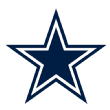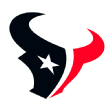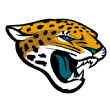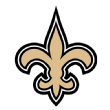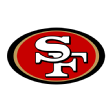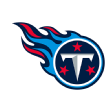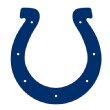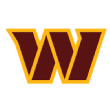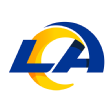Will Paul George end up in Indiana, L.A. or elsewhere?
Larry Bird stepping down as Indiana Pacers team president, as reported Friday by The Vertical, thrusts Pacers GM Kevin Pritchard into the spotlight. While Bird will apparently remain a consultant to the Pacers, it's Pritchard who will now have final say on how the team handles Paul George's impending free agency.
George, who holds a player option for the 2018-19 season, is about 14 months away from potentially hitting unrestricted free agency. And the low likelihood that George will make an All-NBA team and qualify for a designated veteran extension means the Pacers would face entering next season with no guarantees they can re-sign George.
Back in March, I took a look at the chances of five possible resolutions for George and Indiana. Now is a good time to revisit those options in light of Bird's resignation, Pritchard's ascendance and how George and the Pacers played down the stretch and in the playoffs.
Scenario 1
George signs a designated veteran extension this summer: 10 percent
This is the outcome that gives the Indiana front office the least heartburn. If George signs the designated veteran extension this summer, the Pacers would have him under contract through at least 2021-22, presuming George gets a player option on the fifth and final season of the extension.
But first, Indiana has to be able to offer the designated veteran extension, and therein lies the rub. To qualify, George has to make an All-NBA team this season.
I think those chances are better than they appeared in early March for a couple of reasons. First, George finished the regular season on a tear, averaging 28.5 points and 7.5 rebounds in March and April. Second, a number of writers have suggested that they gave George the benefit of the doubt because of how much money is at stake.
Make no mistake, George is still an All-NBA long shot, even if voters and the league consider Anthony Davis at center instead of forward. LeBron James, Kawhi Leonard, Giannis Antetokounmpo are all locks at the position, and I rounded out my All-NBA forward picks with Jimmy Butler, Kevin Durant and Draymond Green. That left both George and Gordon Hayward, the other player who could become eligible for a designated veteran extension, on the outside.
Scenario 2
George is traded this summer: 10 percent
In the event George doesn't make an All-NBA team, or indicates he isn't interested in an extension, Indiana will have a decision to make this summer. George should retain plenty of value around the draft, allowing the Pacers to pick up a strong package of young talent and draft picks to rebuild their roster around the timetable of second-year center Myles Turner, who's shown All-Star potential at age 20.
Although the NBA is holding its new awards show after the draft, league sources told Tim Bontemps of the Washington Post that All-NBA Teams will be announced well in advance, meaning Pritchard and the front office would know ahead of the draft that an extension is off the table.
Still, I think Indiana would -- instead of trading George -- seek to re-sign Jeff Teague and upgrade the bench using either the non-taxpayer mid-level exception or modestly more than that in cap space. The Pacers would hope to compete in the Eastern Conference, which would both satisfy George's desire to play for a contender and improve his chances of making a 2017-18 All-NBA team. While that possibility looks more remote after a sweep at the hands of the Cleveland Cavaliers, George played so well that I think Indiana will exhaust every option to keep him. And I don't think Bird's departure will change anything in that regard.
Also, if he's interested in re-signing as a designated veteran, George would have huge incentive to prevent a trade. Before DeMarcus Cousins was traded to the New Orleans Pelicans, his agent, Jarinn Akana, threatened to ESPN's Marc Stein that Cousins would not re-sign with any team that acquired him via trade. In such a case, expect similar talk from George's representatives.
Scenario 3
George is traded at the 2018 trade deadline: 10 percent
If it doesn't look like he will make an All-NBA team by the 2018 trade deadline, George's value will have dwindled. Given his impending free agency, interested teams will probably look at him mostly as a rental who would require a significant midseason adjustment.
In that case, I doubt anyone would offer enough for the Pacers to justify giving up the chance of impressing George enough with a deep playoff run to re-sign him. A deadline trade would be a likely scenario only if George is willing to indicate he'll re-sign with a new team -- or if the L.A. Lakers, considered the favorite to sign George if he leaves, are in playoff position and willing to give up something of value in order to add him immediately.
Scenario 4
George re-signs with the Pacers in the summer of 2018: 30 percent
Essentially, this is the combination of three slightly different scenarios. One is the possibility that George qualifies to re-sign as a designated veteran by making the All-NBA team in 2017-18, meaning Indiana can offer him far more than any other team -- a projected $210 million or so over five years, as compared to around $133 million over four years with another team.
While I'm not sure the competition for All-NBA spots will get much easier in 2017-18, if George can sustain anything near his level of play over the past month and a half, he'll put himself in strong contention for a spot.
There's also the case where George still re-signs although he's not a designated veteran, taking advantage of the fact that the Pacers can still offer slightly larger raises (8 percent of the first-year salary vs. 5 percent) and a fifth year, meaning such a contract would be worth around $180 million.
A creative possibility would be George opting out and re-signing a two-year contract with a player option for the second season. That would give him another chance to qualify as a designated veteran and otherwise hit free agency with 10 seasons of experience, by which point George could command a larger percentage of the salary cap even if he's not a designated veteran.
Still, if George hits free agency without being eligible for a designated veteran contract, I think Indiana will be challenged to re-sign him. George's displeasure with the Pacers considering trade offers at the deadline is a concern, as is my skepticism that Indiana will be much closer to competing with the Eastern Conference's best teams next season. That leaves one final scenario, which I consider the most likely single outcome.
Scenario 5
George signs elsewhere: 40 percent
Although they'll probably have some work to do to clear the necessary cap space, the Lakers can offer George the chance to return home. Even if that possibility isn't appealing, George should have plenty of options to join a contending team as an unrestricted free agent.
Of course, these percentages are somewhat self-canceling. If the Pacers really believe George is likely to leave as a free agent, it increases the chances they trade him, which paradoxically makes this scenario less likely. Either way, considering the possibilities this way should help offer insight into the uncertain future for Indiana and the team's star player.











